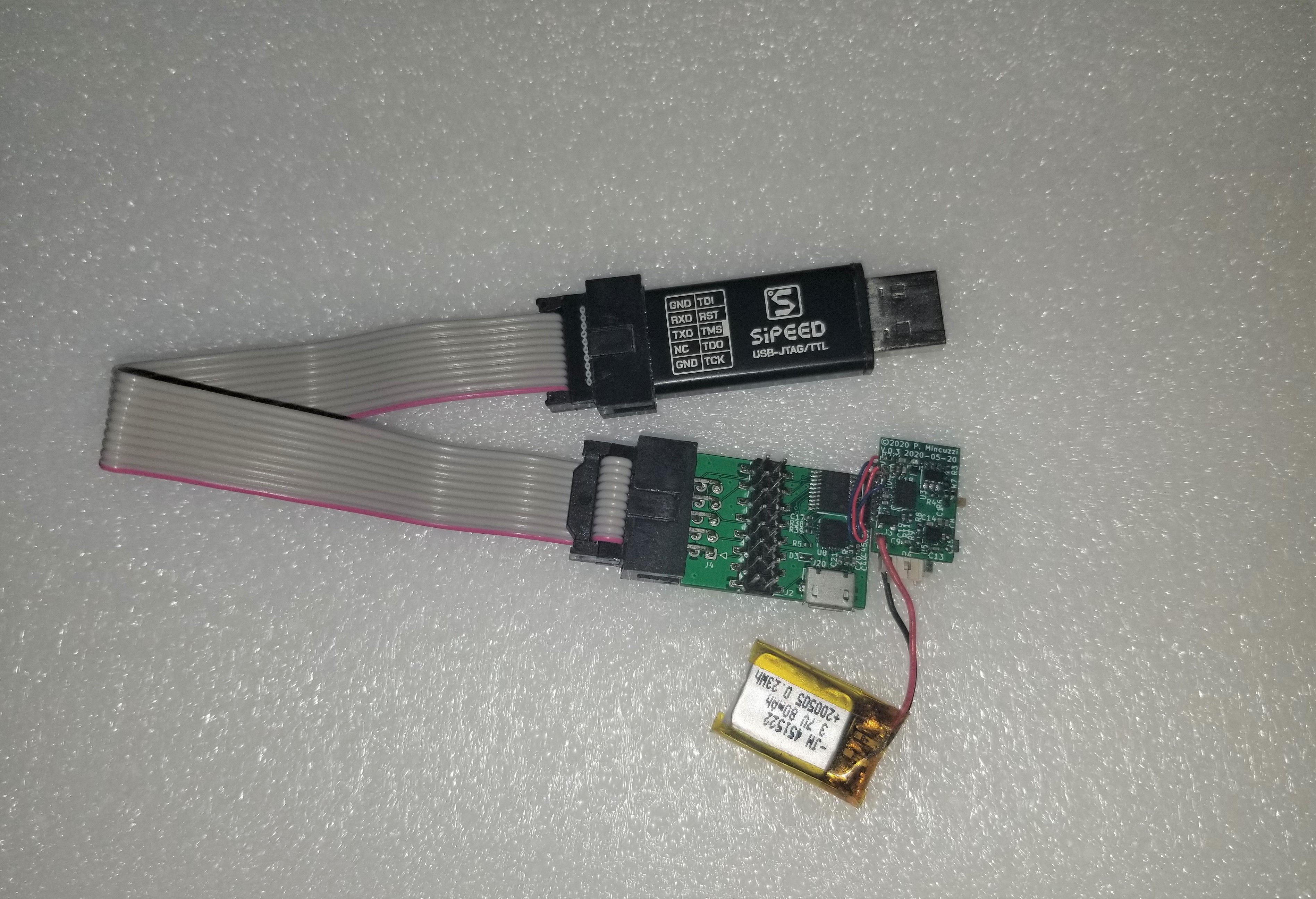uP stands for Uncle Pi
Pronounced: "U. Pi Pico" /yə/ /pī/ /pikō/
The uPPico by MGZ was designed to be a generic wearable BLE device that was originally created to fulfil the needs of two different projects.
- One project was for posture detection (with haptic feedback to the user)
- The second was to use two uPPicos to measure sports movement
The major features are that the device is complete with an accelerometer and magnetometer IMU (acting as a compass or independently), one IO already wired to control haptic vibrator, 2MB storage of flash memory (persistent), 5V power supply and 1 cell LiPo battery charger circuit on board.
The board also offers the standard feature set of Arduino including one LED, UART, I2C, SPI, 2 additional GPIO pins available.
Every time we add a new feature for a project (that we are allowed to share) it will be added to the public repo as a library.
The uP environment is an open platform, currently there are two versions - uPTiny and uPPico. The uPPico has higher performance and is smaller than the uPTiny. However the uPTiny is cheaper and includes a micro-USB port for UART whereas the uPPico requires an external development board to connect the UART.
| Description | |
|---|---|
| SoC | nRF51422 xxac (capable of BLE and ANT) |
| Core | ARM Cortex-M0, 32 MHz |
| Memory | 32 kB RAM, 256 kB ROM |
| Clock | 32 MHz |
| Power | 1.8 V |
| Communication | SPI, UART, I2C |
| Wireless communication | Ultra low power - BLE, ANT |
| Description | |
|---|---|
| Persistent memory | 2MB memory via SPI |
| Power controller | Battery charging and control circuit on-board |
| Sensors | IMU: 3-axis accelerometer with 3-axis magnetometer |
| Outputs | on-board LED, one GPIO already wired for haptic vibrator |
- 12.3mm x 18mm x 6mm for the board (battery excluded) [width x length x height]
The uPPico is connected to a SiPeed Programmer via a special adapter.
The USB allows for programming of the softdevice as well as connecting via UART.
The uPPico can also be programmed wirelessly using Nordic's BLE DFU bootloader.

